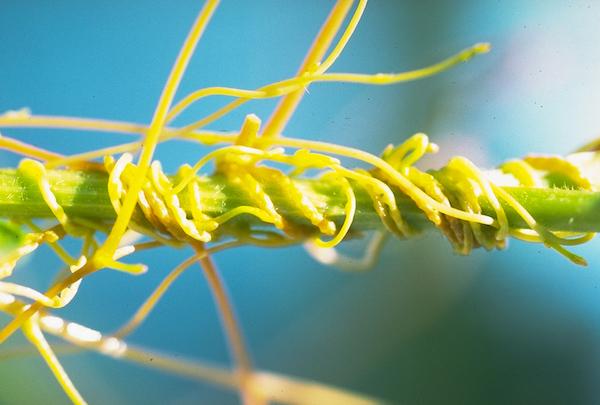Dodder is a thread-like, parasitic annual vine. It lacks chlorophyll and is yellow, orange or red in color. Leaves are small and scale-like. Seeds germinate in the spring and early summer. The young seedlings develop a temporary root system until the dodder attaches to a host plant. Modified roots penetrate the host plant to extract nutrients. Dodder grows rapidly and envelopes its host forming large mats. The flowers are small, white or pink, and found in many clusters. The fruit is a tiny capsule that usually contains 4 seeds. Seeds persist in the soil for a long time. Plants are killed by the first frost.
There are many species of dodder throughout the country. It can be a problem in landscapes and nurseries. Host plants include clover (and other legumes), many herbaceous plants, chrysanthemums, azaleas and cranberries.
Dodder wrapping around a stem

Dodder forms large mats that can smother plants

Management
Hand-pull and dispose of dodder as soon as it is noticed. Preemergent herbicides can be used to control dodder before it germinates.
Still have a question? Contact us at Ask Extension.
